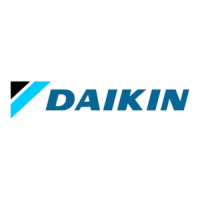5
All units are securely packed in shipping containers
tested according to International Safe Transit Association
specications. The carton must be checked upon arrival
for external damage. If damage is found, a request for
inspection by carrier’s agent must be made in writing
immediately.
The furnace must be carefully inspected on arrival for
damage and bolts or screws which may have come loose
in transit. In the event of damage the consignee should:
1. Make a notation on delivery receipt of any visible
damage to shipment or container.
2. Notify carrier promptly and request an inspection.
3. With concealed damage, carrier must be notied as
soon as possible - preferably within ve days.
4. File the claim with the following support documents
within a nine month statute of limitations.
• Original or certied copy of the Bill of Lading, or
indemnity bond.
• Original paid freight bill or indemnity in lieu thereof.
• Original or certied copy of the invoice, showing trade
and other discounts or reductions.
• Copy of the inspection report issued by carrier’s
representative at the time damage is reported to
carrier.
The carrier is responsible for making prompt inspection of
damage and for a thorough investigation of each claim.
The distributor or manufacturer will not accept claims from
dealers for transportation damage.
S
HOULD
OCCUR
OR
THE
SUPPLY
TO
SHUT
,
TURN
THE
VALVE
EXTERNAL
TO
THE
THE
ELECTRICAL
SUPPLY
P
OSSIBLE
PROPERTY
,
PERSONAL
INJURY
OR
DEATH
DUE
TO
,
EXPLOSION
,
,
SOOT
,
CONDENSATION
,
ELECTRICAL
SHOCK
OR
CARBON
RESULT
INSTALLATION
,
REPAIR
OPERATION
,
OR
THIS
PRODUCT
Use the following precautions during furnace installation
and servicing to protect the integrated control module
from damage. By putting the furnace, the control, and the
person at the same electrostatic potential, these steps
will help avoid exposing the integrated control module to
electrostatic discharge. This procedure is applicable to
both installed and non-installed (ungrounded) furnaces.
1. Disconnect all power to the furnace. Do not touch the
integrated control module or any wire connected to the
control prior to discharging your body’s electrostatic
charge to ground.
2. Firmly touch a clean, unpainted, metal surface of the
furnaces near the control. Any tools held in a person’s
hand during grounding will be discharged.
3. Service integrated control module or connecting
wiring following the discharge process in step 2. Use
caution not to recharge your body with static electricity;
(i.e., do not move or shue your feet, do not touch
ungrounded objects, etc.). If you come in contact with
an ungrounded object, repeat step 2 before touching
control or wires.
4. Discharge your body to ground before removing a new
control from its container. Follow steps 1 through 3 if
installing the control on a furnace. Return any old or
new controls to their containers before touching any
ungrounded object.
Before installing this unit, please read this manual
thoroughly to familiarize yourself with specic items which
must be adhered to, including but not limited to: unit
maximum external static pressure, gas pressures, BTU
input rating, proper electrical connections, circulating air
temperature rise, minimum or maximum CFM, and motor
speed connections.
This furnace is primarily designed for residential home-heating
applications. It is NOT designed or certied for use in
mobile homes, trailers or recreational vehicles. Neither is it
designed or certied for outdoor applications. The furnace
must be installed indoors (i.e., attic space, crawl space, or
garage area provided the garage area is enclosed with an
operating door).
This furnace can be used in the following non-industrial
commercial applications:
Schools, Oce buildings, Churches, Retail stores, Nursing
homes, Hotels/motels, Common or oce areas
In such applications, the furnace must be installed with the
following stipulations:
• It must be installed per the installation instructions
provided and per local and national codes.
• It must be installed indoors in a building constructed on
site.
• It must be part of a ducted system and not used in a free
air delivery application.
• It must not be used as a “make-up” air unit.
• It must be installed as a two-pipe systems for
combustion air.

